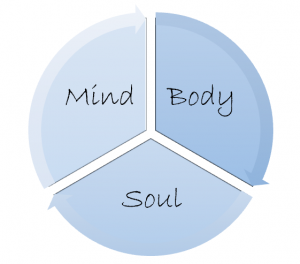Feeling tired, achy, and generally depleted?
Wondering if there is an underlying cause for your autoimmune disease?
Curious what all the hype is about Epstein-Barr?
Let’s take a moment to dive into the Epstein-Barr discussion.
Epstein-Barr is known as an underlying trigger for fatigue, achiness, thyroiditis, immunodeficiency, Hodgkin disease, and autoimmune diseases: lupus, anti-phospholipid syndrome, Hashimotos, Rheumatoid Arthritis, Multiple Sclerosis, and more.(1-4) It can even implicate chronic fatigue syndrome via immune dysregulation from an early nonstructural EBV-encoded protein.(5)
We all should have been exposed to the virus at some point in our life. But it’s hard to say if our immune system kicked it, or if the virus has been lying dormant in the body for years, waiting for the opportune time to reactivate. Like any chronic virus, a dormant virus can reactivate when your body is just overwhelmed and is no longer able to adapt to the day-to-day stressors. Meaning, the reactivation of an underlying virus usually is a combination of factors or events, such as long term stress, insomnia, nutrient deficiencies, genetic stress, environmental stress from too many environmental toxins building up in the body, heightened inflammation levels, and immune dysfunction.
Challenges of testing. Testing can be challenging because we are testing for immune memory. The early antigen is one antibody that is associated with Epstein-Barr reactivation. But, some people will carry that antibody for life from a past exposure, and others may still have the virus in a dormant or latent phase making the antibody untraceable in the blood work. If a virus is reactivated, the white blood cell panel will show a shift in the lymphocytes, with possibly a total white blood cell count that is just lower overall. But diagnosis Epstein-Barr is more than just labs, the clinical picture needs to fit as well.
When it comes to treatments, it’s more than just giving an anti-viral. You truly need to treat the underlying factors that played a part in forming the perfect environment for the virus to re-activate.
For a majority from what I have seen clinically, you may need to work on your stress management. Some people are just running with a higher baseline of stress, possibly formed out of childhood development, that seems ‘normal’ to them. If you are internalizing stress you may feel chest tension, abdominal tension, tight neck muscles, tight shoulders, headaches, racing heart, or ultra-focused. The message to impart here, is to look deep inside and re-evaluate your relationship to stress. Stress lowers the immune system and is a great way to reactivate dormant viruses or activate underlying genetic disorders. We are always going to be exposed to stressors daily through work, family, life, but it is how we process them that is the key. In my personal journey with recovering from reactivated Epstein-Barr, I realized that I had to change my attitude how I move through life. I’ll admit it, I’m an adrenaline junkie. I love the feel of adrenaline, the focus, the drive, the energy. But at what cost? The underlying message that I have had to learn is to be comfortable in a non-adrenaline/restorative state where I can heal and recover. Moving forward, this is really more of a balance where you move through both states, where you have your moments of relaxation and restoration to balance out the moments of drive, focus, and production.
Some of you will also have genetic stress. This can affect your body’s ability to heal, eliminate toxins, create a healthy immune response, and create energy at a cellular level. If you are waking up exhausted after 10-12 hours of sleep, your cells are likely struggling to make energy in a process called mitochondrial dysfunction. If your skin has trouble healing or you have trouble healing after an injury or even just working out, you may have genetic stress in the methylation cycle. We can support the underlying genetic stress through targeted nutrients that repair the genetic function.
Others will have to address environmental toxicity that is placing physical stress and strain on the body. Parabens, phalates, plastics, benzenes from gasoline, heavy metals all affect how your body functions from energy, to moods, to thyroid, to hormonal balance, to genetic function. Looking at your environmental toxin load is an important part to understanding the whole picture and where to start treatment.
Treating the underlying triggers for the reactivation of Epstein-Barr increased effectiveness of the overall treatment. Here are the foundational areas to take into consideration for formulating a protocol that you can discuss with your doctor.
1. Anti-viral. Clinically I’ve seen success with herbal and pharmaceutical. It just depends on how the body responds.
2. Address the underlying factors that formed the perfect environment for reactivating Epstein-Barr: stress, insomnia, nutrient depletions, etc.
3. Improve immune tone: The goal is immune balance and to have an immune system that is strong enough to respond to foreign invaders (virus, bacteria, etc) when needed.
4. Address the cycle of the mind – body – soul. Where are you stuck in this wheel? Each part should nourish the other pieces.

Work with an Expert
If you have fatigue, achiness, thyroiditis, or autoimmune disease talk to an expert to discover and treat the root cause. Don’t just suppress the symptom, heal from the inside.
Are you ready to feel more energized and balance?
Dr Jenny can help discover your root cause of imbalance while teaching you and guiding you on your transformative journey to healing from the inside out.
If you know of someone who could use this valuable information, forward this article along! If I can help even just one more person, I am thrilled and excited.
References:
1. J Vrbikova, I Janatkova, V Zamrazil, F Tomiska, T Fucikova. Epstein-Barr virus serology in patients with autoimmune thyroiditis. Exp Clin Endocrinol Diabetes 1996; 104(1): 89-92. DOI: 10.1055/s-0029-1211428Multiple AI dx:
2. BARZILAI, O. , SHERER, Y. , RAM, M. , IZHAKY, D. , ANAYA, J. and SHOENFELD, Y. (2007), Epstein–Barr Virus and Cytomegalovirus in Autoimmune Diseases. Annals of the New York Academy of Sciences, 1108: 567-577. doi:10.1196/annals.1422.059
3. Tomita, Y. , Ohsawa, M. , Kanno, H. , Hashimoto, M. , Ohnishi, A. , Nakanishi, H. and Aozasa, K. (1996), Epstein‐Barr virus in Hodgkin’s disease patients in Japan. Cancer, 77: 186-192. doi:10.1002/(SICI)1097-0142(19960101)77:1<186::AID-CNCR30>3.0.CO;2-#
4. STRAUS SE, TOSATO G, ARMSTRONG G, LAWLEY T, PREBLE OT, HENLE W, et al. Persisting Illness and Fatigue in Adults with Evidence of Epstein-Barr Virus Infection. Ann Intern Med. ;102:7–16. doi: 10.7326/0003-4819-102-1-7
5. Glaser R, Pagett D, Litsky M, et. al. Stress-associated changes in the steady-state expression of latent Epstein-Barr virus: Implications for chronic fatigue syndrome and cancer. Brain, Behavior, and Immunology. 19:91-103. https://doi.org/10.1016/j.bbi.2004.09.001
